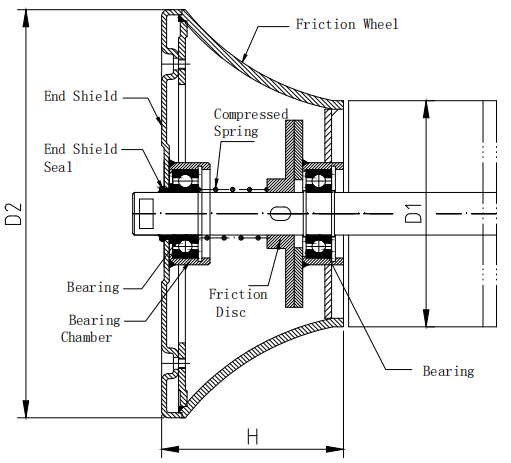 Afrikaans
Afrikaans  Albanian
Albanian  Amharic
Amharic  Arabic
Arabic  Armenian
Armenian  Azerbaijani
Azerbaijani  Basque
Basque  Belarusian
Belarusian  Bengali
Bengali  Bosnian
Bosnian  Bulgarian
Bulgarian  Catalan
Catalan  Cebuano
Cebuano  Corsican
Corsican  Croatian
Croatian  Czech
Czech  Danish
Danish  Dutch
Dutch  English
English  Esperanto
Esperanto  Estonian
Estonian  Finnish
Finnish  French
French  Frisian
Frisian  Galician
Galician  Georgian
Georgian  German
German  Greek
Greek  Gujarati
Gujarati  Haitian Creole
Haitian Creole  hausa
hausa  hawaiian
hawaiian  Hebrew
Hebrew  Hindi
Hindi  Miao
Miao  Hungarian
Hungarian  Icelandic
Icelandic  igbo
igbo  Indonesian
Indonesian  irish
irish  Italian
Italian  Japanese
Japanese  Javanese
Javanese  Kannada
Kannada  kazakh
kazakh  Khmer
Khmer  Rwandese
Rwandese  Korean
Korean  Kurdish
Kurdish  Kyrgyz
Kyrgyz  Lao
Lao  Latin
Latin  Latvian
Latvian  Lithuanian
Lithuanian  Luxembourgish
Luxembourgish  Macedonian
Macedonian  Malgashi
Malgashi  Malay
Malay  Malayalam
Malayalam  Maltese
Maltese  Maori
Maori  Marathi
Marathi  Mongolian
Mongolian  Myanmar
Myanmar  Nepali
Nepali  Norwegian
Norwegian  Norwegian
Norwegian  Occitan
Occitan  Pashto
Pashto  Persian
Persian  Polish
Polish  Portuguese
Portuguese  Punjabi
Punjabi  Romanian
Romanian  Russian
Russian  Samoan
Samoan  Scottish Gaelic
Scottish Gaelic  Serbian
Serbian  Sesotho
Sesotho  Shona
Shona  Sindhi
Sindhi  Sinhala
Sinhala  Slovak
Slovak  Slovenian
Slovenian  Somali
Somali  Spanish
Spanish  Sundanese
Sundanese  Swahili
Swahili  Swedish
Swedish  Tagalog
Tagalog  Tajik
Tajik  Tamil
Tamil  Tatar
Tatar  Telugu
Telugu  Thai
Thai  Turkish
Turkish  Turkmen
Turkmen  Ukrainian
Ukrainian  Urdu
Urdu  Uighur
Uighur  Uzbek
Uzbek  Vietnamese
Vietnamese  Welsh
Welsh  Bantu
Bantu  Yiddish
Yiddish  Yoruba
Yoruba  Zulu
Zulu Understanding Belt Training Idlers for Enhanced Conveyor System Efficiency
Understanding Belt Training Idlers An Essential Component in Conveyor Systems
In the realm of industrial machinery and material handling, conveyor systems play a pivotal role in ensuring efficient transport and processing of materials. Among the various components that contribute to the smooth operation of these systems, belt training idlers are often overlooked yet integral pieces of machinery. This article delves into the function, importance, and maintenance of belt training idlers.
Defining Belt Training Idlers
Belt training idlers are specialized rollers that guide and stabilize the conveyor belt during its operation. These idlers prevent the belt from wandering off its intended path and minimize the risk of damage associated with belt misalignment. Positioned strategically along the conveyor's length, training idlers adjust the belt’s trajectory, ensuring it remains centered and operates efficiently.
How Belt Training Idlers Function
The primary function of belt training idlers is to control and maintain the alignment of the conveyor belt
. As material is loaded onto the belt, it can cause uneven weight distribution that leads to belt drift. This drift can create various operational problems, including excessive wear, increased energy consumption, and potential damage to other components of the conveyor system.Belt training idlers operate by utilizing a combination of gravity and subtle tilt angles. When misalignment occurs, the idler's design enables it to automatically adjust, guiding the belt back to its correct position. This self-correcting feature is crucial in maintaining an efficient and effective conveyor system, reducing downtime and maintenance costs.
Types of Belt Training Idlers
There are several types of belt training idlers, each tailored for specific applications
belt training idlers

1. Impact Idlers Designed to absorb the energy of materials being loaded onto the belt, these idlers protect the belt from damage and help maintain alignment under heavy loads.
2. Self-Aligning Idlers Often used in situations where load distribution is expected to vary, these idlers feature a pivoting design that aids in automatically correcting belt alignment.
3. Buffer Idlers These idlers serve to support the belt in high-load scenarios, ensuring that even with excessive material, the belt remains aligned and operational.
Importance of Proper Maintenance
While belt training idlers inherently work to maintain the conveyor belt's alignment, regular maintenance is critical for ensuring their optimal functionality. Regular inspections should be conducted to check for wear and tear, signs of misalignment, or any obstructions that could impair their functioning.
Lubrication of the idlers is also essential, as friction can lead to premature wear and reduced efficiency. Furthermore, any damaged idlers should be replaced promptly to prevent further complications that could result in significant downtime and operational inefficiencies.
Conclusion
In summary, belt training idlers are a vital aspect of conveyor systems, ensuring that the belt operates seamlessly and remains aligned throughout its use. Understanding the different types of idlers and implementing a regular maintenance schedule can drastically improve the longevity and efficiency of your conveyor operations. As industries continue to advance, the importance of these often-overlooked components becomes increasingly recognized, solidifying their crucial role in material handling and processing systems. By investing in high-quality belt training idlers and their upkeep, businesses can enhance productivity, reduce operational costs, and minimize equipment downtime, ultimately leading to a more efficient workflow.
-
Revolutionizing Conveyor Reliability with Advanced Rubber Lagging PulleysNewsJul.22,2025
-
Powering Precision and Durability with Expert Manufacturers of Conveyor ComponentsNewsJul.22,2025
-
Optimizing Conveyor Systems with Advanced Conveyor AccessoriesNewsJul.22,2025
-
Maximize Conveyor Efficiency with Quality Conveyor Idler PulleysNewsJul.22,2025
-
Future-Proof Your Conveyor System with High-Performance Polyurethane RollerNewsJul.22,2025
-
Driving Efficiency Forward with Quality Idlers and RollersNewsJul.22,2025





























